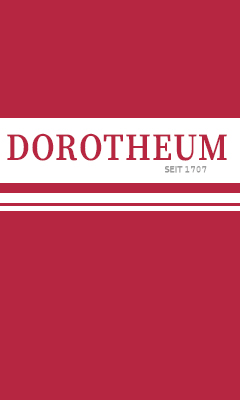Luftwaffe K98 Bayonet
SKU: 22.GOR.04.03.001
Estimated market value:

Estimated market value:
Attributes
History
The German Wehrmacht was composed of three main branches, the Heer (Army), the Kriegsmarine (Navy), and the Luftwaffe (Air Force). The Heer and the Kriegsmarine had a long history of edged weapons dating back to the late 19th century, while the Luftwaffe did not.
One of the Wehrmacht’s wartime regulations stated that all personnel were required to be armed when they were in uniform and not in a secure building. Acceptable sidearms included pistols, rifles, bayonets and other edged weapons.
The K98 Bayonet is also known the Bayonet 84/98 and the standard sidearm (Seitengewehr). The K98 bayonets that were used by Luftwaffe personnel have the same form as the bayonets utilized by personnel in the Heer, but they differ in their use of brown leather in the composition of bayonet frogs.
The handle of the bayonet is made up of the pommel, the grip, and the crossguard. The pommel and crossguard tend to be made from blued steel, which was polished and given a very fine finish in early bayonet examples, but declined in quality over the course of the war. The pommel has the form of a blunted beak. The grips on early bayonets are composed of wooden plates, but the later grips were generally made from bakelite or other plastics. These bakelite grips tend to feature a grooved section. The colour of the bakelite and plastic grips vary, including different shades of brown and black.
The blade is generally composed of polished blued steel with a double-edged edge. These blades were not officially manufactured with a sawback, but for an extra cost, one could be added.
The scabbard is composed of blued steel with a frog stud soldered onto the obverse section. The steel scabbards may be covered in black enamel paint. There are also rare examples that were composed of leather with metal fittings.
The frog for Luftwaffe bayonets is made from brown leather and attached to the personnel’s belt.
This bayonet may feature a variety of marks, including manufacturer marks, manufacturer codes, serial numbers, inspection marks, and property marks. When present, the manufacturer marks are generally acid etched onto the reverse ricasso or the scabbard. The manufacturer codes and serial numbers are featured on the top edge of the scabbard, and the ricasso. Lastly, the inspection "Waffenamt" mark is generally located on the pommel of the bayonet and the ball finial of the scabbard, but they may also be found in other sections of the bayonet and scabbard. These varying types of marks correlate to specific years of production.
From 1935-1945, different parts of the bayonet were stamped with serial numbers ranging from 1-9999. When 9999 was reached in a year, a lower case letter was placed below the number, starting from “a,” going to “z,” and not using “j”. If “z” was reached, the letters under the serial number restarted and were doubled. From 1937-1945, the serial numbers were followed by the last two digits of the year of manufacture.
The bayonets produced from 1934-1937, are marked with secret S-codes. These codes are composed of an “S” followed by three numbers, and they are associated with unknown makers. This code is followed by a “K” for the year 1934, a “G” for the year 1935, and from 1936-1937, the last two digits of the year of manufacture. Known S-codes include S/155, S/172, S/173, S/174, S/175, S/176, S/177, S/178, S/184, S/185, S/214, S/238, S/239, S/240, S/241, S/244, and S/245.
From 1937-1940, the manufacturers were free to place their marks on the reverse ricasso of the blade without any subterfuge.
From 1940-1945, the manufacturer marks were replaced with secret manufacturer codes. The known manufacturer codes include, ab (Mundlos & Co.), agv (Berg & Co.), asw (E. & F. Hörster & Cie.), bym (Maschinenhaus Ferlach), can (Wallmeier Maschinenfabrik-on scabbards), clc (Richard Abr. Herder AG), cof (Carl Eickhorn), cgh (Clemen & Jung), crs (Paul Weyersberg & Co.), cul (Ernst Pack Söhne), cvl (W.C.K. Stahl u. Eisenwarenfabrik), ddl (Josua Corts Sohn), dot (Waffenwerke Brünn AG), ffc (Friedrich Herder & Sohn), fnj (Alcoso Werke), fze (F.W. Höller & Cie), I (Elite Diamant), jwh (Staatliche Waffenfabrik Chatellerault), pyy (Berg & Co.), sgx (.E. & F. Hörster).
The “Waffenamt” inscription mark should be stamped onto all bayonets and scabbards that were produced by the Wehrmacht; the bayonets produced by private manufacturers will not have an inspection mark. This mark consists of a stylized line eagle surmounting the inscription “WaA” and three numbers. The three numbers were assigned to specific inspectors. There are two main versions of the Waffenamt eagles featured on bayonets, the folded wings eagle and an eagle with straight wings. Prior to 1937, the eagle features folded wings, but beginning in 1937, the eagle features extended straight wings.
Legal marks may also be featured on these bayonets, including “Ges. Gesch.”, which means the dagger was protected by law, “D.R.P.”, which means the dagger was made with a patented design, or “D.R.G.M.”, which means the dagger was composed with the utility design. These marks may also be found on the reverse of the leather frog.
The wearer’s name could also be added to the blade for an extra cost.

Versions
$350 USD
Blade: 250mm; Dagger: 385mm


Comments
Sign in to comment and reply.


Scroll Top